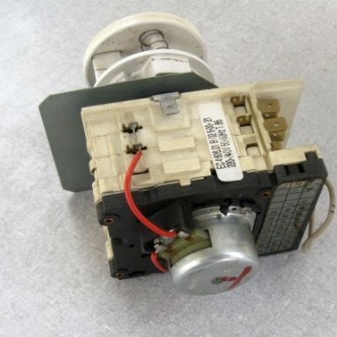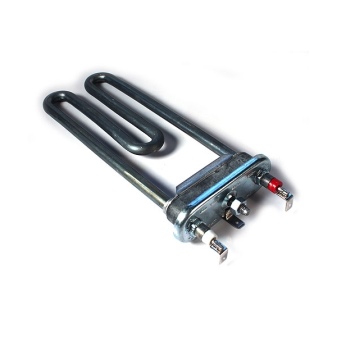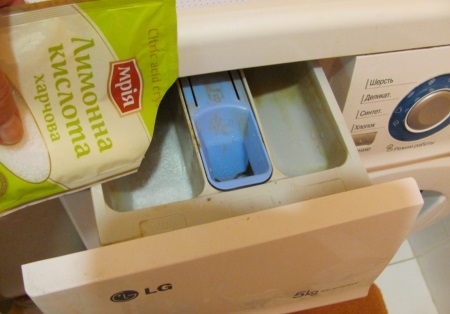What to do if the washing machine does not warm water

In order for the laundry to be washed off all impurities and to find freshness and cleanliness, it is necessary to wash it in warm or hot water - every housewife knows this. Luckily, the days when you had to boil water in huge metal pots to do the laundry are long gone. Today our indispensable helper - washing machine - heats the water, washes and spins the laundry.
However, sometimes, as a result of any malfunction, the machine suddenly "refuses" to heat water. Read below what this problem may be connected with and how to cope with it.
How to understand that the washing machine does not warm water when washing?
It would seem that the most obvious way to determine at what temperature the laundry is washed is to touch the things immediately after the machine finishes the washing cycle. But this is not quite right, because in most cases, freshly washed laundry will be cold. The fact is that the washing machine heats the water only directly for washing, and rinsing the laundry is done in cold water.

A more accurate method is to determine the water temperature through the hatch door. Start the washing program and touch the door after about 30 minutes after its start. If the glass is cold, then there is no heating.
Causes
Washing machines from the most popular manufacturers, such as LG, Samsung, Bosch, Zanussi, Atlant, Indesit, Ardo, usually stop heating water for one of the following reasons:
|
Source of the problem |
What is happening? |
What to do? |
|
Wrong washing mode choice |
The machine does not heat water only for certain washing programs |
All modern washing machine models have several washing modes programmed for different types of fabric. Some materials can only be washed in cold water. Carefully read the user manual: it is possible that the mode you have selected does not provide for heating water |
|
Incorrect connection of the washing machine |
The machine constantly draws and drains water |
If you connected the appliance to the utilities without the help of a professional, you may well have connected the drain and water intake hoses to other outlets. Disconnect the hoses and connect according to the instructions; call a specialist if necessary |
|
Thermostat malfunction |
The thermostat removed from the washer-dryer shows the same resistance when cooled and warmed |
Resistance of the thermostat can be checked using a multimeter by holding the thermostat under hot water for warming; if the reading is the same the thermostat must be replaced for a new one |
|
Tubular heating element malfunction |
There may be mechanical damage or a thick layer of buildup on the heating element body or damage to the wires connected to the heating element |
The resistance of the heating element can be checked by measuring the resistance with a tester. If the readings of the device do not correspond to the norm, a new FET should be purchased (what values are considered as normal values can be found in special literature). |
|
Malfunction of the software module |
Connected properly, correct washing program selected, all elements are in order, but water still doesn't heat up |
The programmer could malfunction for various reasons, for example, as a result of a power surge. The problem is solved by reprogramming or resetting it to its original settings |
What should I do if the washer takes too long to heat up?
It happens so that the water in the washing machine heats up, but very slowly, so that after a fairly long time after starting the washing the door glass is still cold. This, insignificant at first glance, the problem can lead to quite serious trouble. Poorly washed laundry is a shame, but that's not all: as a consequence of slow heating, the heating element or the programmer can break down.


Most often the cause of such strange "behavior" of the washing machine is the formation of a thick layer of scale on the heater tubes. To get rid of plaque, it is recommended to run the program of washing and rinsing with an empty tank, pouring two tablespoons of citric acid instead of detergent (at the same time washing should be performed at maximum water temperature).

Tips
- If your washing machine has been in use for more than 7 years, most likely most of the problems in its operation are related to the heating element. The quality of our tap water leaves much to be desired, so the service life of the heating element is noticeably reduced. Experts advise replacing this element as soon as the first problems appear.
- Modern models of washing machines are equipped with a function of forced water heating (how to start it, read in your user manual). If the thermostat is malfunctioning, this feature will help you get by for a while without replacing the water temperature sensor.
- One of the indicators that the washer does not heat water is a musty smell of washed clothes. It does not always appear, but if you notice it, the first thing to do is to test the heating element for malfunction.
- In order to extend the service life of the tubular heating element (because it is most often associated with interruptions in water heating), you need to use only high-quality detergents and not to exceed the dosage of detergents and care products. If you are concerned about the quality of tap water, install a flow filter to reduce the level of hardness.




